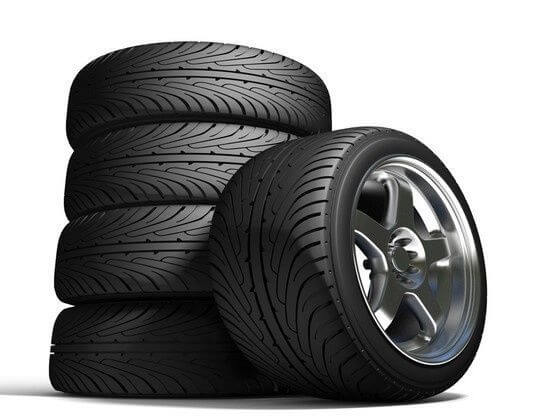We’ve all been there – the moment when Mother Nature decides to throw a curveball and challenge our driving skills with unpredictable weather conditions. Whether it’s a sweltering summer day, a rainy afternoon, or navigating through a snowstorm, having the right tyres on your vehicle can make all the difference in ensuring your safety and maintaining control on the road. In this guide, we’ll explore the ins and outs of choosing the right new tyres for different weather conditions, providing you with practical advice to help you make informed decisions and stay safe on your journeys.
1. The Basics of Tyre Types
Before we delve into the specifics of weather-related tyre choices, it’s essential to understand the basic types of tyres available in the market:
a. All-Season tyres
- Suitable for mild weather conditions throughout the year.
- Provide a balanced performance in dry, wet, and light snowy conditions.
- Ideal for regions with moderate temperature variations.
b. Summer tyres
- Designed for warm weather and dry road conditions.
- Offer enhanced grip and handling in hot temperatures.
- Not suitable for cold or snowy weather.
c. Winter tyres
- Engineered for cold weather and snowy or icy road conditions.
- Feature specialized rubber compounds that remain flexible in low temperatures.
- Provide superior traction in winter conditions.
Now that we’ve covered the basic tyre types let’s explore which ones are best suited for various weather scenarios.
2. Tyres for Sunny and Dry Weather
a. All-Season tyres
- All-season tyres are the go-to choice for drivers who encounter mainly dry and sunny weather. They offer a well-rounded performance and are suitable for everyday driving.
- These tyres provide a comfortable and quiet ride, making them perfect for city and highway driving.
- All-season tyres also have a longer lifespan compared to specialized tyres, making them a cost-effective choice.
3. Tyres for Rainy Conditions
When the skies open up, and the rain starts pouring down, having the right tyres can significantly improve your safety on wet roads.
a. All-Season tyres
- All-season tyres are a decent choice for rainy conditions, thanks to their moderate wet-weather performance.
- They offer reliable grip on wet roads, but drivers should exercise caution in heavy rain or standing water.
b. Rain tyres
- For regions with frequent rainfall, rain tyres (also known as wet tyres) are a specialized option.
- Rain tyres have grooves and tread patterns optimized for water dispersion, reducing the risk of hydroplaning.
- They provide excellent wet-road traction but may not perform well in other weather conditions.
4. Tyres for Winter Weather
Navigating through snowy and icy roads demands specialized tyres that are designed to handle the cold, slippery challenges of winter.
a. Winter tyres
- Winter tyres are the top choice for cold-weather conditions, including snow and ice.
- They feature a unique rubber compound that remains flexible in low temperatures, ensuring a firmer grip on the road.
- The deep tread patterns and biting edges provide superior traction in snow and ice, reducing the risk of accidents.
5. Tyres for Mixed Weather Conditions
In regions where you experience a mix of weather conditions throughout the year, it can be challenging to choose the right tyres. However, there are options that strike a balance between performance in different conditions.
a. All-Weather tyres
- All-weather tyres are designed to handle a wide range of weather conditions, making them a versatile choice.
- They offer good traction in both wet and dry conditions, as well as moderate performance in light snow.
- While not as specialized as dedicated winter tyres, all-weather tyres provide a practical solution for regions with unpredictable weather.
6. Factors to Consider When Choosing Tyres
Now that we’ve covered the types of tyres for different weather conditions, let’s explore some essential factors to consider when making your decision:
a. Climate and Weather Patterns
- Take into account the predominant weather conditions in your region. Is it hot and dry, rainy, snowy, or a mix of these? Choose your tyres accordingly.
b. Driving Habits
- Consider your typical driving habits. Do you commute long distances on the highway, or are you mainly a city driver? Your driving style can impact your tyre choice.
c. Budget
- Tyres come in various price ranges, so it’s essential to establish a budget before shopping. While it’s tempting to opt for the cheapest option, investing in high-quality tyres can pay off in terms of safety and longevity.
d. Tyre Size and Vehicle Compatibility
- Make sure the tyres you choose are the correct size for your vehicle. Consult your vehicle’s manual or a tyre professional for guidance.
e. Tyre Ratings
- Pay attention to tyre ratings and reviews. Look for tyres with high ratings in the specific weather conditions you’ll be facing.
7. Maintenance and Care
Once you’ve selected the right tyres for your region and driving needs, proper maintenance is crucial to ensure their longevity and performance:
a. Regularly check tyre pressure and maintain it at the recommended levels.
b. Rotate your tyres according to the manufacturer’s guidelines to ensure even wear.
c. Inspect the tread depth regularly, and replace tyres when they become worn to a dangerous level.
d. Avoid overloading your vehicle, as it can put extra strain on your tyres and decrease their lifespan.
Conclusion
Choosing the right tyres for different weather conditions is a critical aspect of responsible driving. Your safety and the safety of those around you depend on having the appropriate tyres on your vehicle. Take the time to assess your climate, driving habits, and budget to make an informed decision.
Whether it’s all-season tyres for mild weather, rain tyres for wet conditions, or winter tyres for the cold, snowy months, investing in the right set of tyres will ultimately lead to a safer and more enjoyable driving experience. So, don’t wait until the next weather challenge strikes – equip your vehicle with the right tyres and hit the road with confidence. Safe travels!














